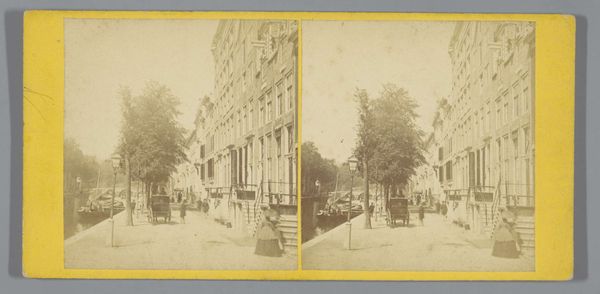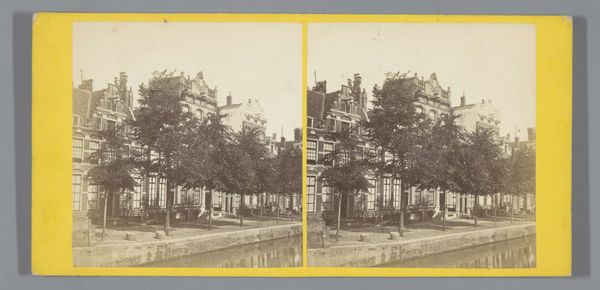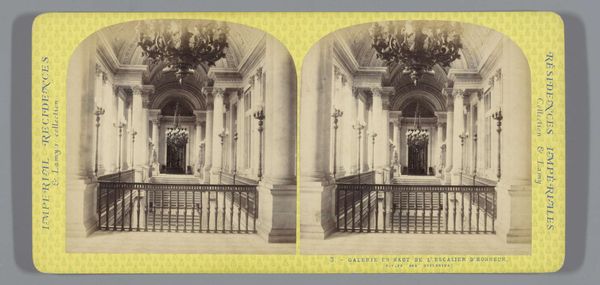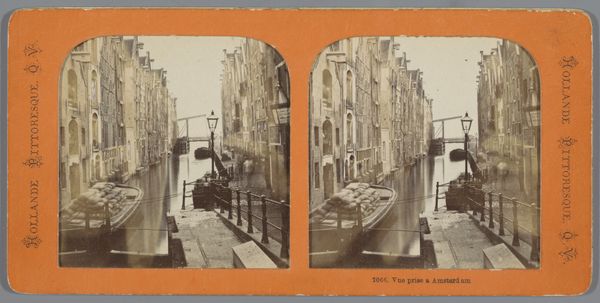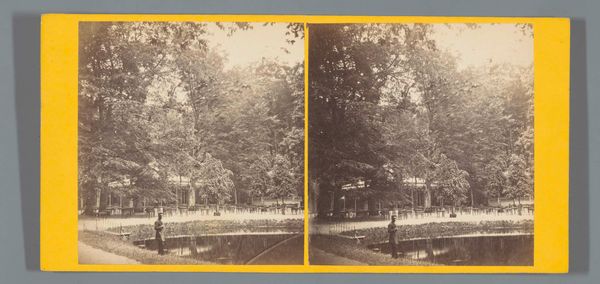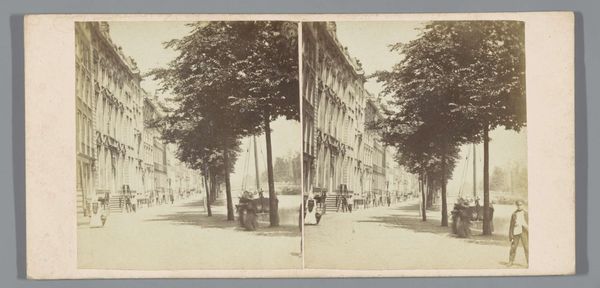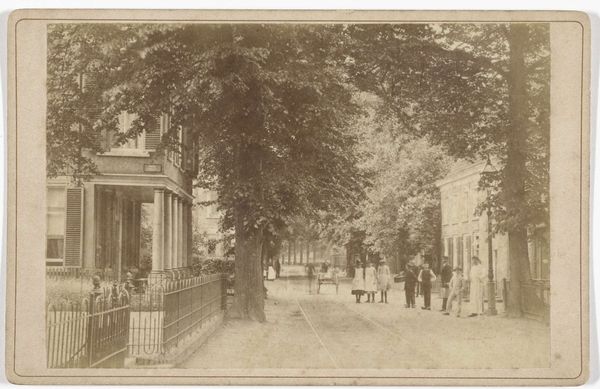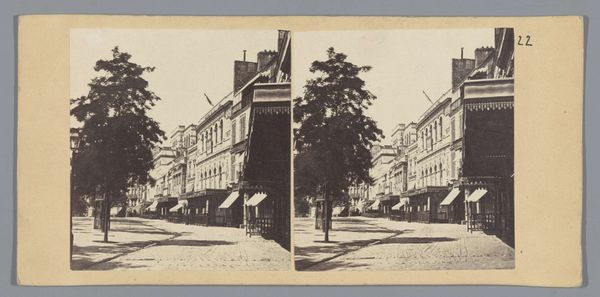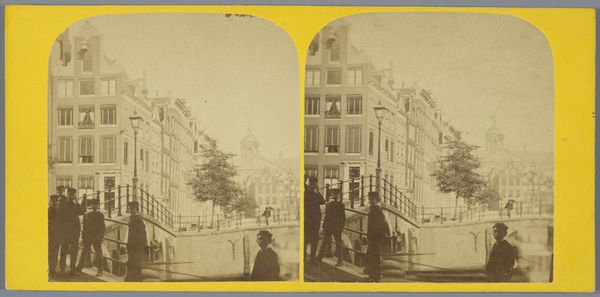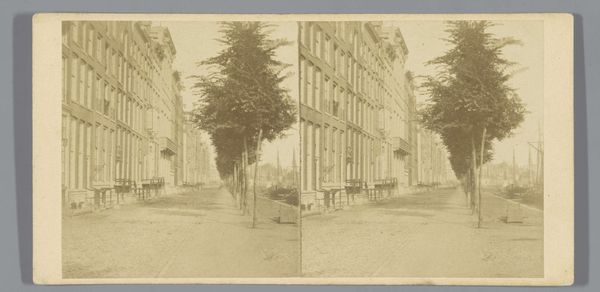
Michigan Avenue, South from Jackson Street 1850 - 1874
0:00
0:00
Dimensions: 7.7 × 7.5 cm (each image); 8.4 × 17.5 cm(card)
Copyright: Public Domain
Editor: This is “Michigan Avenue, South from Jackson Street,” a gelatin-silver print by Copelin & Melander, taken sometime between 1850 and 1874. The stereoscopic view gives it a striking depth. I find the neat rows of houses and trees somewhat serene. How do you interpret this work? Curator: What strikes me is the deliberate framing. Notice how the photographers chose to capture this specific angle of Michigan Avenue, emphasizing the neat rows and the architectural uniformity. Think about the context: Chicago was booming, transforming rapidly. What stories are being told through the ordering of space? Are there intentional choices about framing the composition, the angle, or what's included? Editor: Well, the identical houses do feel like they’re emphasizing order and progress. Was this “progress” accessible to all? Curator: Exactly. Consider who is represented in this image. We see no people. The focus is on structures and order, reflecting a certain vision of urban development. Whose voices are being amplified and whose are being excluded in this picture of Chicago's rise? Editor: So, it’s presenting a very specific narrative, almost a curated image of what the city wanted to be. Curator: Precisely. It prompts us to ask: who benefited from this progress, and at what cost? Whose stories are left out of this carefully constructed image? These types of images actively shape social perception, solidifying the narrative of who belongs and who does not. Editor: It’s amazing to think how much this image can tell us about the social landscape of the time, and how photographers can play a role in documenting or reinforcing ideologies through what they choose to show. Curator: Exactly, looking beneath the surface to expose the power structures at play. A fascinating piece, when you start digging deeper.
Comments
No comments
Be the first to comment and join the conversation on the ultimate creative platform.
